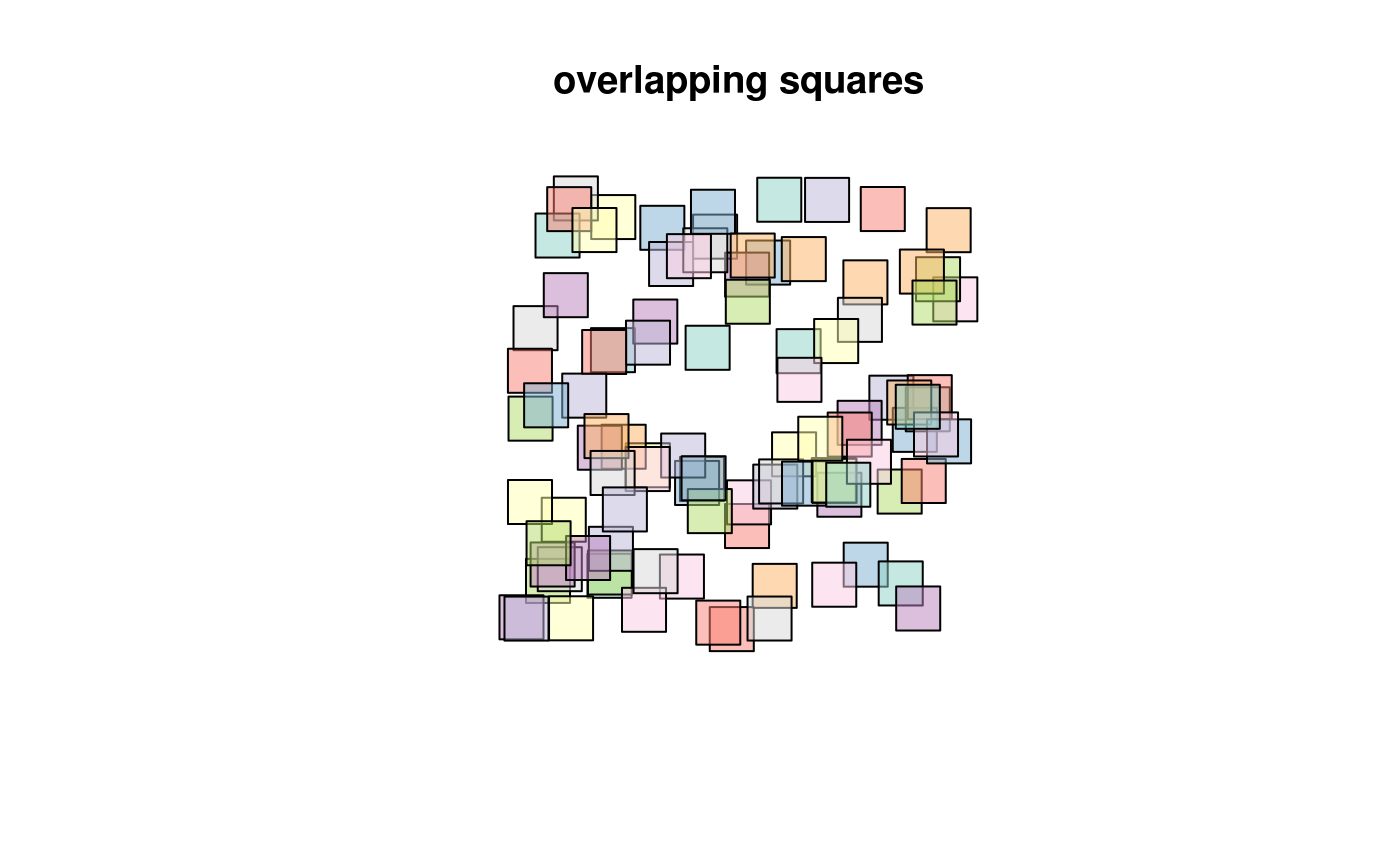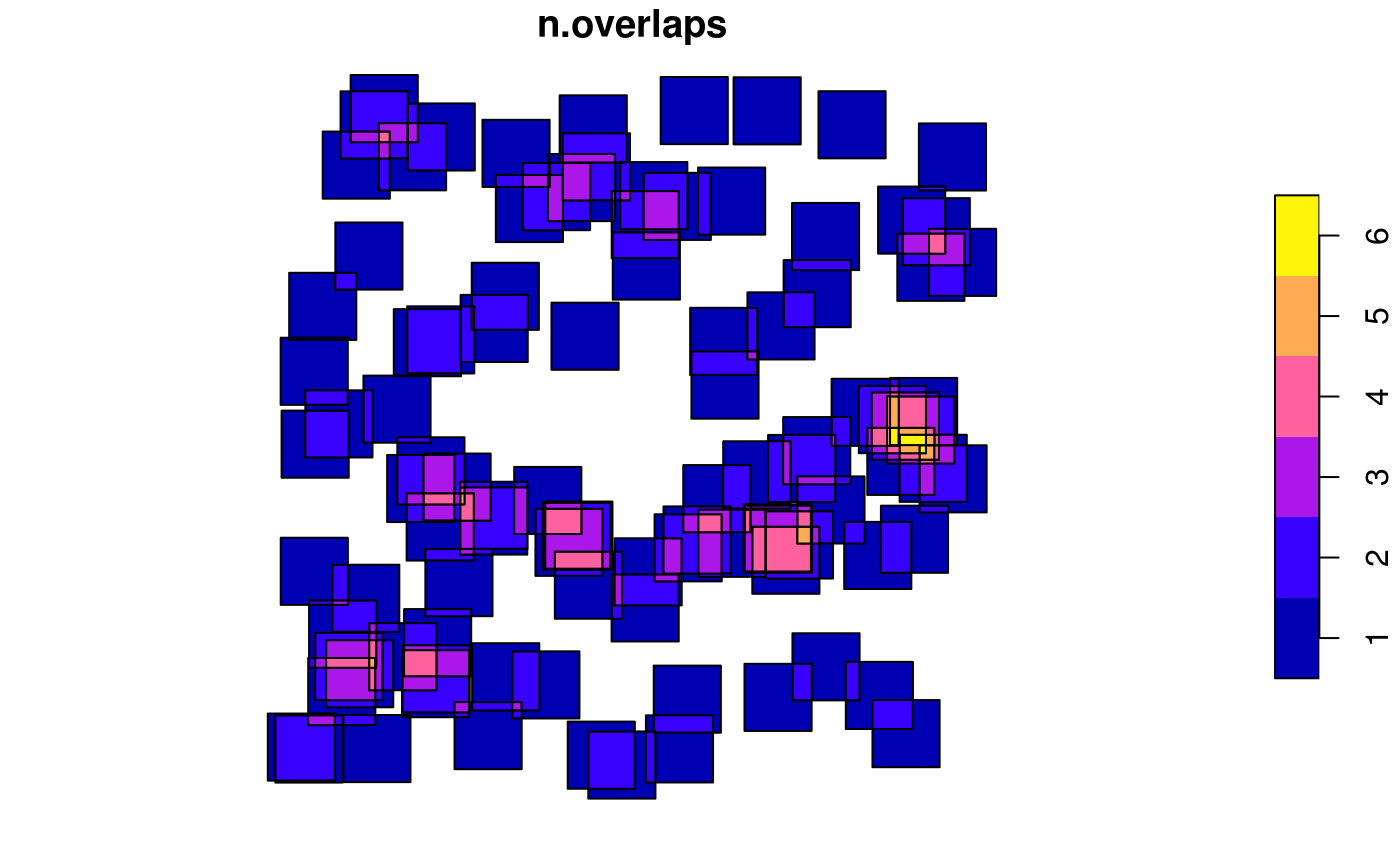Perform geometric set operations with simple feature geometry collections
st_intersection(x, y) # S3 method for sfc st_intersection(x, y) # S3 method for sf st_intersection(x, y) st_difference(x, y) # S3 method for sfc st_difference(x, y) st_sym_difference(x, y) st_snap(x, y, tolerance)
Arguments
| x | object of class |
|---|---|
| y | object of class |
| tolerance | tolerance values used for |
Value
The intersection, difference or symmetric difference between two sets of geometries.
The returned object has the same class as that of the first argument (x) with the non-empty geometries resulting from applying the operation to all geometry pairs in x and y. In case x is of class sf, the matching attributes of the original object(s) are added. The sfc geometry list-column returned carries an attribute idx, which is an n-by-2 matrix with every row the index of the corresponding entries of x and y, respectively.
Details
A spatial index is built on argument x; see http://r-spatial.org/r/2017/06/22/spatial-index.html. The reference for the STR tree algorithm is: Leutenegger, Scott T., Mario A. Lopez, and Jeffrey Edgington. "STR: A simple and efficient algorithm for R-tree packing." Data Engineering, 1997. Proceedings. 13th international conference on. IEEE, 1997. For the pdf, search Google Scholar.
When called with missing y, the sfc method for st_intersection returns all non-empty intersections of the geometries of x; an attribute idx contains a list-column with the indexes of contributing geometries.
when called with a missing y, the sf method for st_intersection returns an sf object with attributes taken from the contributing feature with lowest index; two fields are added: n.overlaps with the number of overlapping features in x, and a list-column origins with indexes of all overlapping features.
When st_difference is called with a single argument,
overlapping areas are erased from geometries that are indexed at greater
numbers in the argument to x; geometries that are empty
or contained fully inside geometries with higher priority are removed entirely.
The st_difference.sfc method with a single argument returns an object with
an "idx" attribute with the orginal index for returned geometries.
Note
To find whether pairs of simple feature geometries intersect, use
the function st_intersects instead of st_intersection.
See also
st_union for the union of simple features collections; intersect and setdiff for the base R set operations.
Examples
set.seed(131) library(sf) m = rbind(c(0,0), c(1,0), c(1,1), c(0,1), c(0,0)) p = st_polygon(list(m)) n = 100 l = vector("list", n) for (i in 1:n) l[[i]] = p + 10 * runif(2) s = st_sfc(l) plot(s, col = sf.colors(categorical = TRUE, alpha = .5))title("overlapping squares")d = st_difference(s) # sequential differences: s1, s2-s1, s3-s2-s1, ... plot(d, col = sf.colors(categorical = TRUE, alpha = .5))title("non-overlapping differences")title("non-overlapping intersections")#> Min. 1st Qu. Median Mean 3rd Qu. Max. #> 0.00 2.00 3.50 3.66 5.00 8.00#> Min. 1st Qu. Median Mean 3rd Qu. Max. #> 0 0 0 0 0 0#> Min. 1st Qu. Median Mean 3rd Qu. Max. #> 0 0 0 0 0 0#> Min. 1st Qu. Median Mean 3rd Qu. Max. #> 0 0 0 0 0 0# A helper function that erases all of y from x: st_erase = function(x, y) st_difference(x, st_union(st_combine(y)))



